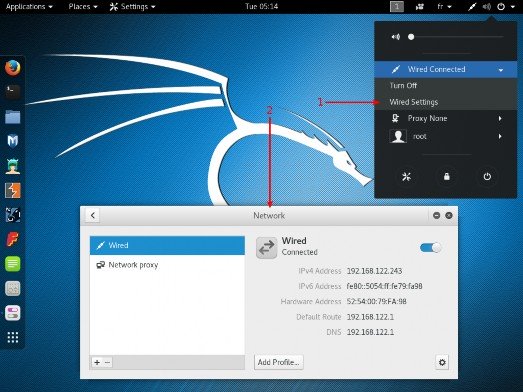< Previous | Contents | Next >
5.1.1. On the Desktop with NetworkManager
In a typical desktop installation, you’ll have NetworkManager already installed and it can be con- trolled and configured through GNOME’s control center and through the top-right menu as shown in Figure 5.1, “Network Configuration Screen” [page 104].

Figure 5.1 Network Configuration Screen
The default network configuration relies on DHCP to obtain an IP address, DNS server, and gate- way, but you can use the gear icon in the lower-right corner to alter the configuration in many ways (for example: set the MAC address, switch to a static setup, enable or disable IPv6, and add additional routes). You can create profiles to save multiple wired network configurations and easily switch between them. For wireless networks, their settings are automatically tied to their public identifier (SSID).
NetworkManager also handles connections by mobile broadband (Wireless Wide Area Network WWAN) and by modems using point-to-point protocol over ethernet (PPPoE). Last but not least, it provides integration with many types of virtual private networks (VPN) through dedicated plu- gins: SSH, OpenVPN, Cisco’s VPNC, PPTP, Strongswan. Check out the network-manager-* packages; most of them are not installed by default. Note that you need the packages suffixed with -gnome to be able to configure them through the graphical user interface.


 Documentation
Documentation